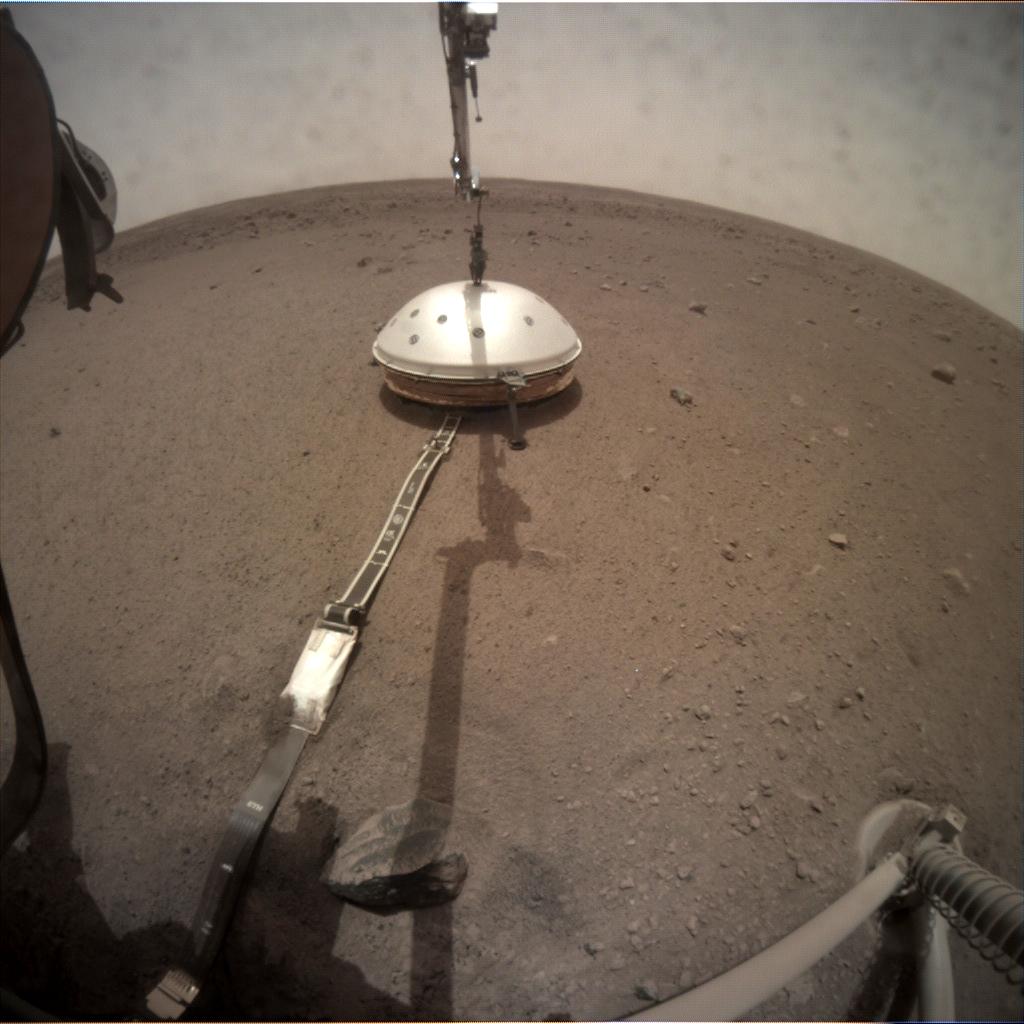NASA's InSight Lander On Mars Deploys Shield for Quake-Tracking Seismometer
The first seismometer ever deployed on the surface of Mars now has a shield.
NASA's InSight lander dropped an insulating cover over its Marsquake-sensing seismometer on Feb. 2, mission team members said.
The cover is called the Wind and Thermal Shield, and that name sums up its purpose — to dampen environmental "noise" that could swamp or complicate readings from the supersensitive seismometer instrument (which is called the Seismic Experiment for Interior Structure, or SEIS). [NASA's InSight Mars Lander: Full Coverage]
"Temperature is one of our biggest bugaboos," InSight Principal Investigator Bruce Banerdt, of NASA's Jet Propulsion Laboratory in Pasadena, California, said in a statement.

"Think of the shield as putting a cozy over your food on a table," Banerdt added. "It keeps SEIS from warming up too much during the day or cooling off too much at night. In general, we want to keep the temperature as steady as possible."
Temperatures at InSight's location, on the equatorial plain Elysium Planitia, fluctuate by about 170 degrees Fahrenheit (94 degrees Celsius) over the course of a typical Martian day, NASA officials said. Avoiding such swings by burying the seismometer deep underground, as geologists do here on Earth, is not a viable tactic for a lone robot on another world.
The $850 million InSight mission landed on Nov. 26, tasked with mapping the Red Planet's interior in unprecedented detail. The lander will do this work with two main instruments — SEIS, which InSight deployed on Dec. 19, and a burrowing heat probe called HP3 (short for "Heat Flow and Physical Properties Package"), which is scheduled to hit the red dirt next week.
Get the Space.com Newsletter
Breaking space news, the latest updates on rocket launches, skywatching events and more!
InSight's deployments are made using the lander's robotic arm, which is outfitted with a wax-actuated, five-fingered claw. These fingers grab ahold of little knobs protruding from the tops of the mission's instruments, in a high-stakes version of the arcade claw game.
No other Mars mission has ever put scientific gear directly on the planet's surface before; previous rovers and landers have kept their instruments on their bodies and their robotic arms.
InSight — short for "Interior Exploration Using Seismic Investigations, Geodesy, and Heat Transport" — will also use its communications gear for scientific purposes. Mission team members will precisely track the lander's position on the Martian surface over time. This information will tell them how the planet's rotational axis wobbles, which will, in turn, shed light on the nature of Mars' core.
InSight's mission is scheduled to last at least two Earth years. That's a little more than one Mars year; it takes the Red Planet 687 Earth days to complete one orbit of the sun.
Mike Wall's book about the search for alien life, "Out There" (Grand Central Publishing, 2018; illustrated by Karl Tate) is out now. Follow him on Twitter @michaeldwall. Follow us @Spacedotcom or Facebook. Originally published on Space.com.
Join our Space Forums to keep talking space on the latest missions, night sky and more! And if you have a news tip, correction or comment, let us know at: community@space.com.

Michael Wall is a Senior Space Writer with Space.com and joined the team in 2010. He primarily covers exoplanets, spaceflight and military space, but has been known to dabble in the space art beat. His book about the search for alien life, "Out There," was published on Nov. 13, 2018. Before becoming a science writer, Michael worked as a herpetologist and wildlife biologist. He has a Ph.D. in evolutionary biology from the University of Sydney, Australia, a bachelor's degree from the University of Arizona, and a graduate certificate in science writing from the University of California, Santa Cruz. To find out what his latest project is, you can follow Michael on Twitter.









